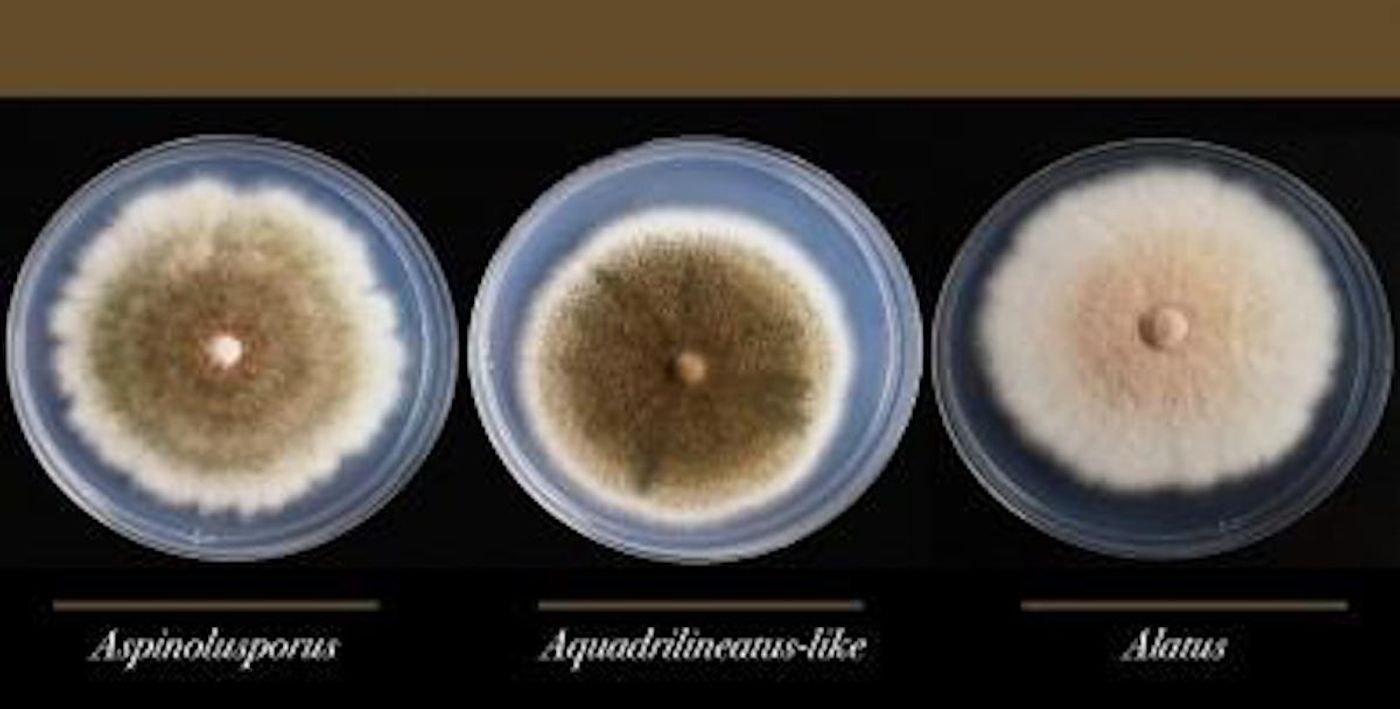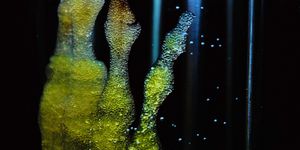A Hybrid Fungus Is Linked to Lung Infections
A type of fungus called Aspergillus latus that's been found in soil or plants has now been identified in a hospital environment and in people for the first time. Researchers sequenced the genomes of these fungi and determined that some were actually hybrids that could be as many as three times more resistant to antifungal drugs than the two species they come from.The findings have been reported in Current Biology.
People inhale spores from fungi in the Aspergillus genus all the time. Usually, they're harmless for healthy people. But they can cause a lung disease called Aspergillosis in people that have weak immune systems; it causes pneumonia, and balls of fungus can accumulate in the lungs. The most common cause of Aspergillosis is an Aspergillus fungus called A. fumigatus, though other species like A. flavus, A. nidulans, and A. terreus can cause it.
"In about 90 percent of cases, infection by Aspergillus is caused by A. fumigatus, but in some human genetic diseases, A. nidulans is a more frequent cause. We, therefore, started assembling clinical material from various parts of the world to see how often this species occurred in a hospital environment. To our surprise, six out of ten samples contained a fungus that had never before been found to infect people," said the co-principal investigator of the study Gustavo Henrique Goldman, a professor in the University of São Paulo's Ribeirão Preto School of Pharmaceutical Sciences (FCFRP-USP).
This work utilized samples of fungi collected from patients with allergic bronchopulmonary disease and emphysema. The scientists used genetic sequencing to analyze the samples. Of the ten samples, six were revealed to be A. latus, which has never been identified in people before this. (The others were A. nidulans and one was a soil fungus that also infects people called A. quadrilineatus.)
A. latus is unusual in that it's diploid and has two sets of its chromosomes, while most fungi only carry one set - they're usually haploid. DNA from both of its relatively distantly related parents was retained, suggesting a recent emergence for the hybrid. Other researchers have found that A. latus is up to three times as drug-resistant and fights off human immune cells more effectively than its parental species.
"The fungus gains significant advantages from being a hybrid," Goldman said. "Accurate identification of the species that causes the infection is important in order to decide on the best treatment and avoid resistance to existing drugs."
It's unfortunately common for clinicians to misdiagnose the fungal infection, and few have the resources to perform genetic sequencing to identify it correctly.
The COVID-19 pandemic and hospital-based fungi infections could also pose new challenges; patients with the viral illness may be at higher risk for a more severe illness because of normally harmless fungi that are often found in the environment.
"Several COVID-19 patients have died owing to concomitant infection by Aspergillus," Goldman said. "We currently have four strains that were isolated from patients who died of COVID-19 in Europe and will sequence their genomes to identify the species and see if they're favored by the disease."
Sources: AAAS/Eurekalert! via FAPESP, Current Biology
-
MAY 07, 2024Is It Anti-RNP or Anti-Sm/RNP?
- See More
-
APR 30, 2024Immuno-Oncology Virtual Event Series 2024
-
MAY 07, 20243rd International Biosecurity Virtual Symposium
-
JUN 06, 2024The Future of Scientific Conferencing
- See More


















































